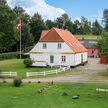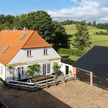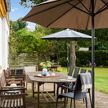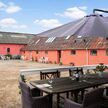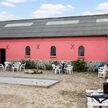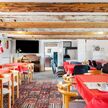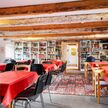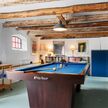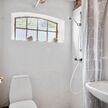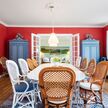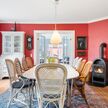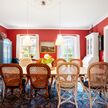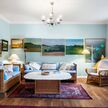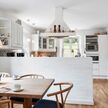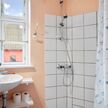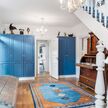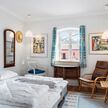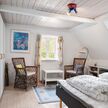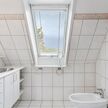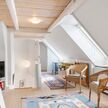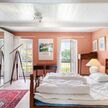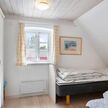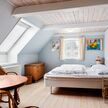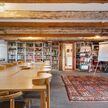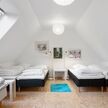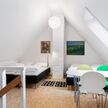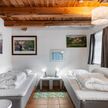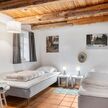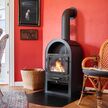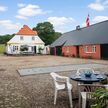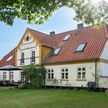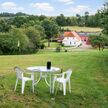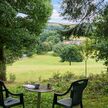When you enter “Højskolen Engvang”, you enter a piece of Danish history. The whitewashed main building stood like a bright spot in the hilly landscape by Vejle Fjord. Built in 1869 by Frederikke Pio, who started a folk high school for girls on the site. Later, “Højskolen Engvang” was home to Count Kay Tramp, son of Count Christian Johan Frederik Tramp II of Kyø and Charlotte Frederikke Countess, Knuth-Knuthenborg, Countess. Count Kay Tramp modernized agriculture in the area by, among other things, introducing the self-binder, which can harvest grain and bind sheaves in one go. He lived at Engvang until he emigrated to Canada during World War I.
Today, the building has a red tiled roof, flanked by beautiful gables, where timber and details from the 17th century can still be seen. History is in the walls – and when you move through the rooms, you clearly notice that this house has been used for everyday life, college life, gatherings and parties for more than 150 years.
A house with soul and space for community
The main building today covers 410 m² spread over three floors and can accommodate up to 20 overnight guests + children. Many of the original details have been preserved – including the curved staircase from the 19th century, which elegantly connects the floors, and a study that takes you back to the college’s heyday. The remaining 16 beds are in the annex.
On the 2nd floor there is a dormitory-like room that gives today’s guests a sense of how the young women lived side by side during their stays at the folk high school in the 19th century. Please note that the stairs to this may be steep for some.
The associated buildings have been carefully renovated and offer modern comfort. The former cowshed now functions as a banquet hall or conference room with space for up to 48 people. Here you can gather the whole company for dinner, a party or a course, while the farmhouse provides a cozy setting for coffee, music and conversation.
History within the walls
“Højskolen Engvang” contains stories like few other places in Denmark. During World War II, freedom fighters and refugees hid under floorboards and in the skunks. In the old stables, the beams still speak their own language – here men, women and farmers have lived, worked and perhaps exchanged secret dreams, small stories and big plans.
Facilities for young and old
“Højskolen Engvang” is not only history – it is also a modern place with lots of possibilities.
• Banquet hall/conference room with space for up to 48 people
• Kitchenette with large refrigerator area, industrial oven and dishwashers
• Activity room with billiards, table tennis and darts
• Small museum with football games and darts
• Outdoor activities: croquet, petanque, ball games and golf practice range
• Large garden of 15,000 m², perfect for playing, relaxing or outdoor life
Here you can gather for festive meals, play games, have a round of petanque or simply enjoy the view and tranquility from the garden.
The surroundings
“Højskolen Engvang” is in beautiful nature between Billund and Vejle, not far from
The Grave of the Egved Girl and Tørskind Gravelpit, along with some of the area's biggest attractions such as LEGOLAND®, LEGO® House and Kongernes Jelling/Jelling Monumenterne | UNESCO World Heritage within half an hour's drive. On the grounds there are several viewpoints including terraces, where you can sit and enjoy your afternoon coffee and look at nature. And you can catch salmon and sea trout in Vejle Å
A half-hour drive away is Kolding, which has many cultural offerings, such as TRAPHOLT and Koldinghus as well as Kolding Storcenter, if shopping is what you are after. Otherwise, the magnificent nature around Højskolen Engvang is ideal for hiking or cycling.

